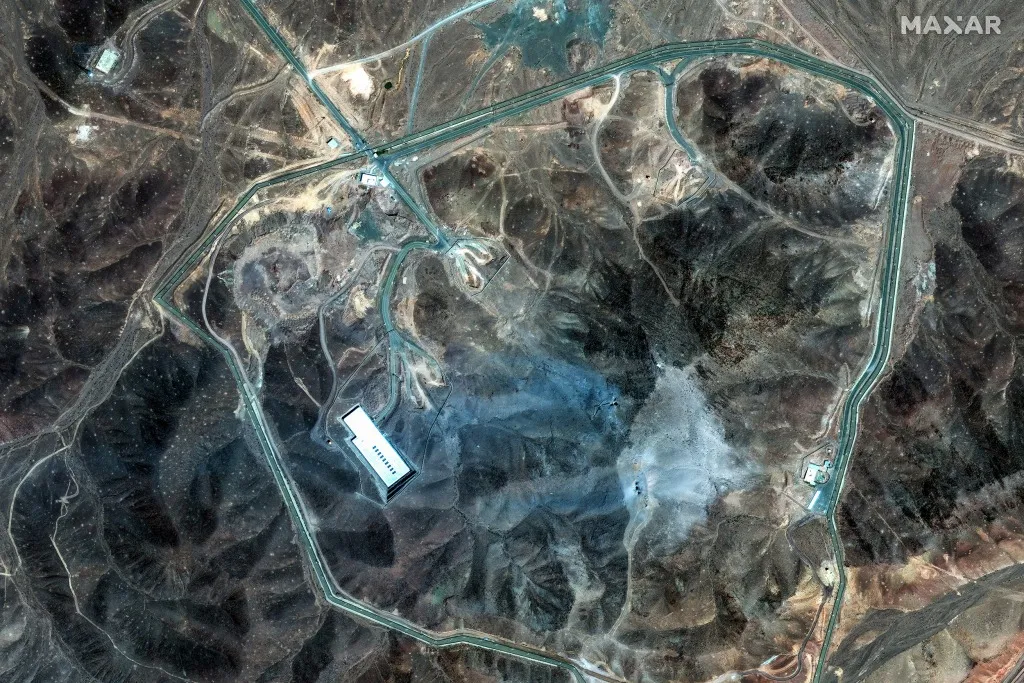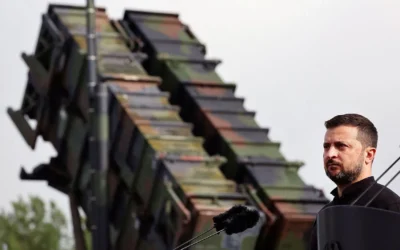New U.S. Assessment Reveals Impact of Strikes on Iranian Nuclear Sites
In a stunning turn of events, a new U.S. intelligence assessment has revealed that recent American military strikes on Iranian nuclear facilities were far less effective than previously suggested. The analysis indicates that of the three primary nuclear sites targeted during these operations, only one – the Fordo site – suffered significant damage, while the other two sites remained largely intact.
The Context of the Strikes
The strikes in question occurred amid escalating tensions between the United States and Iran, following a series of provocative actions by the Iranian regime. The Trump administration justified the military operation as a preemptive measure to curb Iran’s growing nuclear capabilities and deter potential aggression towards U.S. allies in the region.
Discrepancies in Military Effectiveness
According to the newly leaked intelligence report, while the Fordo facility – known for its underground operations – did face considerable setbacks from the strikes, the Natanz and Arak complexes were able to withstand the assault with minimal operational disruption.
This revelation raises critical questions about the effectiveness of the military strategy employed by former President Donald Trump’s administration. While official statements were optimistic regarding the damage inflicted upon Iran’s nuclear program, the reality appears to paint a much different picture.
Trump’s Decision-Making Process
Interestingly, the assessment sheds light on Trump’s decision-making process regarding the scale of U.S. military engagement in Iran. According to sources close to the situation, President Trump had been briefed on the potential for a wider military operation that could have targeted additional Iranian facilities. However, he ultimately chose not to pursue this more aggressive approach.
Critics argue that Trump’s decision to limit the scope of the strike starkly contrasts with the aggressive rhetoric employed by his administration. His reluctance to escalate military action raises questions about the motivations behind the strike and the genuine perceived threat that Iran posed at the time.
Implications of the Intel Leak
The newly surfaced intelligence report has caused shockwaves across the political spectrum, particularly for those who supported the previous administration’s hawkish stance on Iran. The leak not only undermines the credibility of Trump’s claims about the military intervention but also raises concerns about the reliability of intelligence used to justify such operations.
Moreover, many analysts believe that this information could hinder future U.S. military operations in the region. If adversaries perceive American strikes as comparatively ineffective, it may embolden Iran and other nations to pursue their own military objectives without fear of significant retaliation.
The Broader Impact on U.S.-Iran Relations
As the fallout from this intelligence leak continues to unfold, it also prompts a reevaluation of broader U.S.-Iran relations. The strikes initially aimed to deter Iran’s nuclear ambitions have, in fact, contributed to increasing hostilities. Iran’s government has since vowed to continue its nuclear activities unabated.
This escalation further complicates the efforts of the Biden administration to negotiate a more comprehensive and sustainable nuclear agreement with Iran. With the perception of U.S. military uneffectiveness in the region, Iran may feel emboldened to resist U.S. diplomatic overtures and maintain its hardline stance.
Reactions from Experts and Political Leaders
The leaks have drawn reactions from a wide array of experts and political leaders. Many voices in the foreign policy community are raising alarms about the potential fallout of these revelations.
“This is a wake-up call for U.S. policymakers,” said a leading foreign affairs expert. “How we approach military interventions in complex regions must be informed by accurate intelligence and a clear strategy.”
Moreover, some voices in Congress are calling for hearings to investigate the circumstances surrounding the assessment, arguing for greater accountability regarding the military actions taken under the Trump administration.
The Path Forward
Moving forward, U.S. officials face the daunting task of navigating a world where the repercussions of military action may not align with the expected outcomes. The intelligence leaks have prompted discussions about the need for more transparent military operations and greater scrutiny of intelligence assessments.
Ultimately, the U.S. must balance its military capabilities with diplomatic efforts to mitigate tensions and create an environment conducive to dialogue. As the lessons learned from this assessment unfold, it is imperative that American leaders consider both the immediate and long-term consequences of military force in complex geopolitical landscapes.
Conclusion
The ramifications of this intelligence leak extend far beyond just a reassessment of military effectiveness in Iran. It calls into question the strategies employed by the U.S. in addressing nuclear proliferation and reminds policymakers that military intervention is only one of many tools available. As the U.S. grapples with the ripple effects of its past actions, a more nuanced understanding of international relations may be essential in preventing further escalation and promoting peace.







